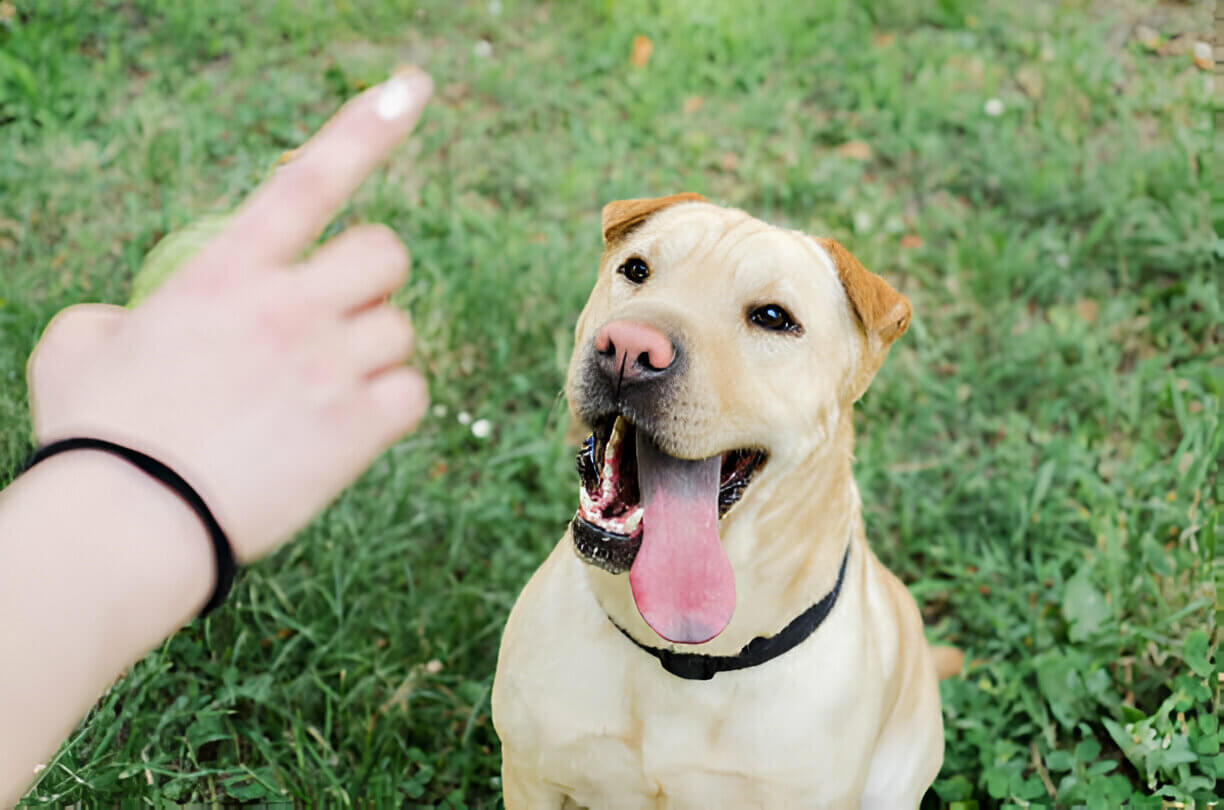Dog training is an essential aspect of pet ownership that ensures your dog is well-behaved, happy, and healthy. Adhering to a set of fundamental principles can make the training process smoother and more effective. This guide outlines the golden rules of dog training to help you and your furry friend achieve the best results.

Understanding the Basics
The Importance of Training
Training your dog is not just about teaching commands; it’s about building a strong, trusting relationship. Effective training can prevent behavioral issues, enhance safety, and ensure your dog is a joy to be around. A well-trained dog is easier to manage, less likely to cause problems, and more enjoyable as a companion.
Golden Rule #1: Consistency is Key
Consistency in training methods, commands, and consequences is crucial. Dogs thrive on routine and predictability. Ensure that everyone involved in your dog’s training uses the same commands and techniques. Mixed signals can confuse your dog and hinder their learning process.
For instance, if you use “sit” as a command, make sure everyone in the household uses the same word and not variations like “sit down.” Consistency helps your dog understand what is expected of them and reduces confusion.
Golden Rule #2: Positive Reinforcement
Positive reinforcement involves rewarding your dog for good behavior, which encourages them to repeat it. Rewards can include treats, praise, or playtime. This method is more effective and humane compared to punishment-based training. Consistently rewarding your dog helps build a positive association with the desired behavior.
When your dog sits on command, immediately reward them with a treat and praise. This reinforces the behavior and makes it more likely to be repeated. Over time, your dog will learn that sitting when asked results in positive outcomes.
Golden Rule #3: Patience and Persistence
Training a dog takes time and patience. Dogs learn at their own pace, and some may take longer to grasp certain commands than others. It’s important to stay calm and patient, avoiding frustration or anger. Persistent and patient training sessions will yield better long-term results.
If your dog doesn’t understand a command right away, take a break and try again later. Repetition and consistency are key. With time and persistence, your dog will eventually learn the desired behavior.
Golden Rule #4: Keep Sessions Short and Engaging
Dogs have limited attention spans, especially when they are young. Short, frequent training sessions are more effective than long, infrequent ones. Aim for several short sessions throughout the day to keep your dog engaged and prevent boredom. Keeping sessions fun and positive ensures your dog remains enthusiastic about learning.
A five-minute training session can be just as effective as a longer one, provided it is focused and engaging. Incorporate play and treats to keep your dog interested and motivated.
Golden Rule #5: Understand Your Dog’s Needs
Every dog is unique, with different temperaments, learning styles, and motivations. Take the time to understand what motivates your dog and tailor your training approach accordingly. Some dogs respond better to treats, while others may prefer toys or verbal praise.
Observe your dog’s behavior and preferences. If your dog loves toys, use them as a reward during training. If they prefer treats, use those instead. Understanding your dog’s needs helps make training more effective and enjoyable for both of you.
Practical Training Tips
Start Early
Begin training your dog as early as possible. Puppies are highly impressionable and can start learning basic commands and socialization skills from a young age. Early training sets the foundation for good behavior as your dog grows.
Puppyhood is the best time to start training because young dogs are eager to learn and adapt to new experiences. Basic commands like “sit,” “stay,” and “come” can be introduced early on.
Use Clear Commands
Use clear, concise commands and avoid changing them. For example, if you use “sit,” stick with that word and do not interchange it with “sit down.” Consistency in commands helps your dog understand what is expected of them.
Clear commands help your dog associate specific words with specific actions. This clarity makes it easier for your dog to learn and respond appropriately.
Avoid Negative Reinforcement
Avoid using punishment or negative reinforcement as it can create fear and anxiety in your dog. Instead, focus on rewarding positive behavior and redirecting unwanted behavior.
For example, if your dog is chewing on furniture, redirect them to a toy and praise them when they start chewing on it. This positive approach encourages good behavior without causing fear or stress.
Long-Term Training Strategies
Socialization
Socializing your dog is crucial for their development. Expose them to different environments, people, and other animals to help them become well-rounded and confident. Socialization helps prevent fear-based behaviors and promotes positive interactions.
Introduce your dog to new experiences gradually and positively. Take them to different places, meet new people, and interact with other dogs. Positive social experiences help your dog become more adaptable and less fearful.
Continued Education
Training is an ongoing process. Even after your dog has mastered basic commands, continue to teach them new tricks and reinforce good behavior. Ongoing training keeps your dog mentally stimulated and strengthens your bond.
Teaching new tricks and commands challenges your dog’s mind and keeps them engaged. It also provides opportunities for continued positive interaction and reinforcement.
Adaptability
Be adaptable in your training methods. If a particular technique isn’t working, be open to trying new approaches. Dogs have different learning styles, and what works for one may not work for another.
If your dog isn’t responding to treats, try using toys or praise as a reward. Flexibility in your training approach ensures that you can find the most effective method for your dog’s learning style.
Celebrating Success
Recognize Achievements
Celebrate your dog’s progress and achievements, no matter how small. Recognizing and rewarding their efforts boosts their confidence and reinforces positive behavior.
A simple treat or praise when your dog follows a command can make a big difference. Acknowledging your dog’s achievements keeps them motivated and eager to learn.
Keep Training Fun
Ensure that training sessions are enjoyable for both you and your dog. Use games, treats, and positive interactions to make training a fun experience. A happy dog is more likely to be enthusiastic about learning.
Incorporate play into your training sessions to keep things interesting. For example, play a game of fetch as a reward for following commands. Keeping training fun and engaging helps maintain your dog’s interest and enthusiasm.
Conclusion
Training your dog involves understanding their unique needs, being consistent, and using positive reinforcement. Patience, persistence, and adaptability are key to successful training. By following these golden rules, you can foster a strong, trusting relationship with your dog, ensuring they are well-behaved, happy, and healthy.




